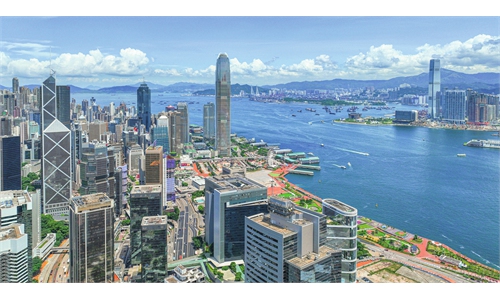
Illustration: Chen Xia/GT
The travel and tourism sector has been identified as a major driver of China's GDP growth, with policymakers orchestrating fresh pushes to develop tourism infrastructure, upgrade catering facilities including hotels and restaurants, and globally promote China's natural landmarks and cultural heritages that are world-renowned.Last year, tourism experienced a significant resurgence following a hiatus between 2020-2022 due to the COVID-19 pandemic. A total of 4.89 billion domestic trips were made in 2023, up by 93.3 percent over the previous year, and domestic tourist spending reached 4.91 trillion yuan ($680 billion). At the same time, the number of inbound visits by overseas tourists to the Chinese mainland totaled 82 million, with the tourist spending reaching $53 billion.
This year, the travel and tourism industry is forecasted to account for at least 9 percent of the GDP, according to estimates by the China Tourism Association, thanks to the government's increased efforts to bolster domestic travel and attract more inbound tourists to visit the country. This is in part through the introduction of streamlined visa policies and other favorable arrangements.
Seen from other countries' practices, tourism is inseparable from culture. The integrated development of cultural and tourism sector has constituted an important part of the country's cultural confidence-building efforts. The development of the tourism sector has received increased attention from the central government, which decided in 2018 to merge the previous National Tourism Administration with the country's Culture Ministry.
Over the past several years, an important shift in China's travel and tourism landscape has been the increasing emphasis on cultural tourism, where traditional heritages intertwine with contemporary travel. As the country preserves and celebrates its abundant historical and cultural treasures, such as the Great Wall, the Forbidden City, the Confucius Temple and the Terracotta Warriors, there has been a surge in cultural tourism activities.
Now, benefitting from greater financial support, Chinese provinces and cities are working hard to develop tourism-related "hardware and software," as they realize that more visitors, both domestic and from abroad, means more spending in local restaurants, shops and hotels, as well as more job creation.
A number of provinces and cities with rich cultural heritages, such as Northwest China's Shaanxi, Central China's Henan, East China's Shandong, Southwest China's Sichuan as well as Beijing, Shanghai and Chongqing are aiming to attract more tourists so that tourism revenues account for a larger chunk of local GDP.
The rapid economic rise of a number of cities including Shenzhen, Guangzhou, Hangzhou, Wuhan, Suzhou, Qingdao, Xiamen, Sanya and Guilin have also seen their visitor numbers grow rapidly. These cities have found a distinctive way to craft their messaging to build brand awareness among tourists.
Rising household incomes and relaxed travel restrictions post-pandemic are driving a surge in domestic travel. In 2023, per capita disposable income in the Chinese mainland reached more than 39, 218 yuan, a 6.3 percent increase from 2022. Additionally, urban households saw a per capita disposable income of over 51,821 yuan, according to data from the National Statistics Bureau. With increased incomes, family vacations have become increasingly popular among urban Chinese residents, allowing them to embark on outdoor adventures and spend quality leisure time together.
International tourist arrivals are finally set to return to pre-pandemic levels in 2024. To further promote inbound tourism, the national immigration authorities this year initiated unilateral visa-free entries for tourists from more than a dozen countries, with New Zealand and Australia becoming the latest additions to the list. In addition, the authorities in May announced they will grant visa-free treatment for overseas tourist groups entering China by cruise at all cruise ports along the country's coast line, starting from May 15.
Streamlined visa policies have greatly facilitated the rapid growth of inbound tourism. As the scope of the visa-free policy expands, the convenience for overseas tourists has improved. The government has implemented a range of measures to better accommodate inbound tourists, including optimizing instant mobile payment. For example, Tencent has updated WeChat Pay to support overseas mobile phone numbers and bank cards. According to the Travel and Tourism Development Index 2024 compiled by the World Economic Forum, China now ranks eighth globally in tourism development and is the only developing economy in the Top-10 list.
In terms of tourism sector management, training and education for tourism professionals are rapidly evolving to meet customer demands and global development trends. The pandemic has accelerated the adoption of travel technology, such as contactless service, digital payment, room service robots, VR and AR exploration, and new technologies like AI, which will help Chinese cities provide more personalized tourism products. In addition, tech innovations like smart hotel rooms that adjust lighting, temperature and ambiance, as well as loT-enabled transportation providing real-time updates, are increasingly being used in the sector.
To sum up, it is of importance to vigorously develop China's tourism sector. The tourism industry has all the conditions to gear up for a strong resurgence in 2024, as the country is blessed with a unique variety of natural landscapes and distinctive cultural heritage and cities with their own charm and hidden treasures.
The author is an editor with the Global Times. bizopinion@globaltimes.com.cn



